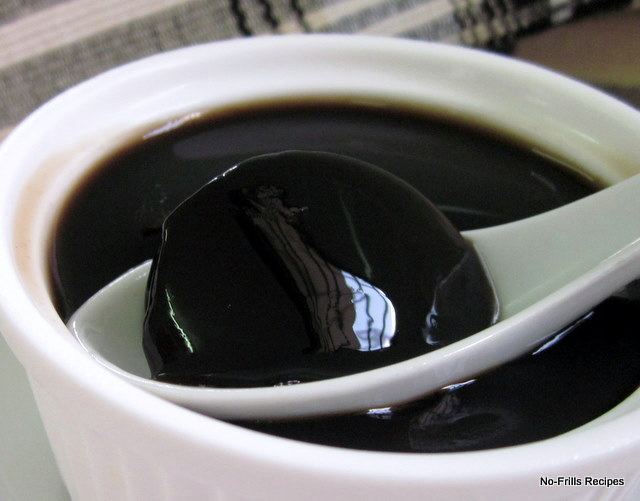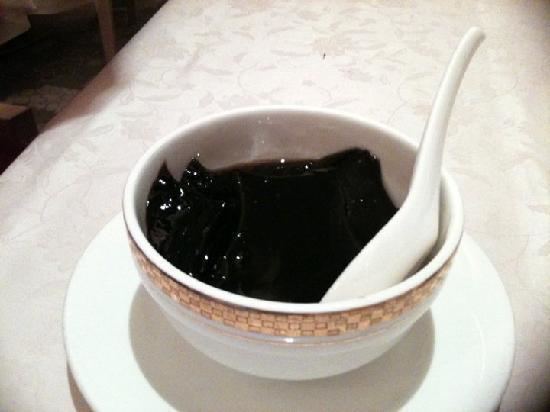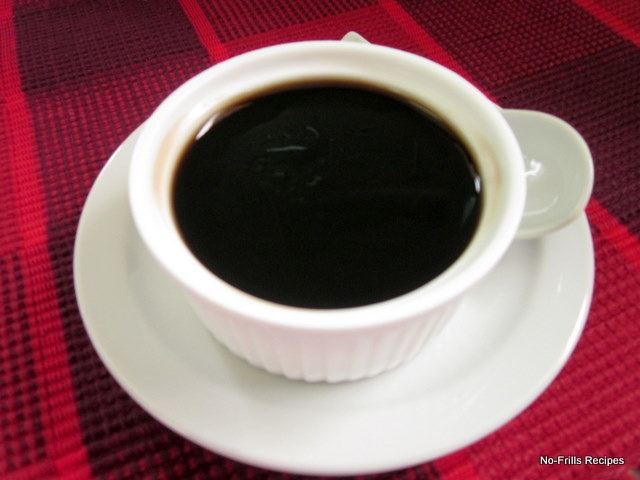 | ||
Alternative names Tortoise Jelly, Turtle Jelly Similar Chinese herb tea, Tong sui, Grass jelly, Liangfen, Hasma | ||
Guīlínggāo, also known as Tortoise Jelly (though not technically correct) or Turtle Jelly, is a jelly-like Chinese medicine, also sold as a dessert. It was traditionally made from the powdered plastron (bottom shell) from the turtle Cuora trifasciata (commonly known as "three-lined box turtle", or "golden coin turtle", 金錢龜) and a variety of herbal products, in particular, China roots Smilax glabra (土伏苓, Tu fu ling). Although the golden coin turtle (Cuora trifasciata) is commercially farmed in modern China, it is extremely expensive; therefore, even when turtle-derived ingredients are used in commercially available guīlínggāo, they come from other, more commonly available, turtle species.
Contents
More often, commercially available guīlínggāo sold as a dessert does not contain turtle shell powder at all, despite the product name and the prominent turtle images on most brands' labels. They do, however, share the same herbal additives as the medicine and are similarly marketed as being good for skin complexion when ingested.

History

According to a legend, the Tongzhi Emperor nearly cured his smallpox by taking guilinggao. However, Empress Dowager Cixi believed his disease could be cured by worshipping a smallpox idol. She succeeded in convincing the emperor to quit his guilinggao regimen. The emperor died soon after.

Guilinggao is thought to be good for the skin, allowing for a healthier complexion upon repeated consumption. Other supposed positive effects of the jelly includes improving circulation, assisting muscle growth, relieving itching, reducing acne and kidney restoration.
Variety
Regular guilinggao jelly is black in appearance; however, the actual color is more of a dark brown. Naturally, it is not sweet, but slightly bitter, although sweeteners such as honey can be added to make it more palatable.
Availability
Relatively inexpensive canned guilinggao jelly with poptop lids and plastic spoons for immediate consumption can be found in many East and Southeast Asian countries, as well as Chinatowns in the United States and Canada. It is also available for purchase in England. There are two varieties. and one of them also contains Lingzhi powder.
Preparation
Traditional guilinggao recipes require boiling turtle shell for many hours, first by itself, then with a variety of herbal ingredients, so that the liquid is gradually evaporated and a jelly-like residue forms. Rice flour and corn starch is added to "thicken" the product.
The ingredients of traditional guilinggao consists of 300g tortoise plastron,
80g rehmannia root,
80g honeysuckle flower,
80g smilax rhizome,
80g Chinese mesona,
40g abrus fruit,
32g atractylodes rhizome,
32g forsythia fruit,
20g dandelion,
20g dictamnus root bark,
20g siler root,
20g schizonepeta spike,
20g chrysanthemum flower,
20g lysimachia,
30 bowls of water, boiled to half its volume. 375g of rice flour and 80g of corn flour are used to thicken the decoction.
Guilinggao jelly can be prepared at home from commercially sold powdered concentrate (the "guilinggao powder"), similarly to how Jello is made. When it is prepared, other herbal substances, such as ginseng, are added to the jelly to give it certain tastes and medicinal values.
